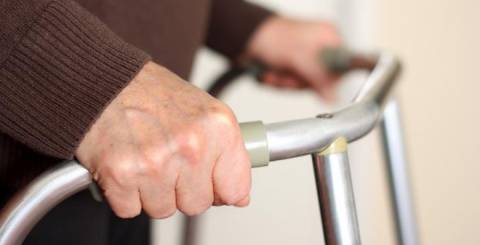Factors to Consider When Buying Walking Frames for the Elderly

Mobility aids are the best medical products used by the disabled and elderly to walk easily, which are not capable to move or walk freely on their own. Today, the market is flooded with many kinds of mobility aids.
Mobility Scooter
Walking Sticks
Walking Frames
Wheel Chairs
What are Walking Frames?
Walking frames are the most desired medical equipment preferred by many elderly. These are easy to operate and provide more support. You can rest your arms on its handlebars and move it by applying arm strength. There are extensive kinds of walking frames available, but before you start the hunt, it is important to consider the needs of the elderly.
These are the most common medical aids to provide additional support while walking. Many mobility aids are prepared from aluminum which is user-friendly as well as lightweight. The walking frames normally have 4 feet with robust rubber tips known as ferrules. It has a strong grip and non-slip contact with the surface.
Types of Walking Frames
- Standard walking frames
The non-wheeled walking frames have four legs and 4 rubber feet. Also known as Zimmer frames, these are available in many sizes and widths. The walking frames with a wider base are more stable and reliable than the narrow base. These frames are just right for those who are either recovering from some operation or unstable on their feet.
- Folding frames
Folding frames are easy to carry and can be tucked into the room corner or area with less space. These have many joints and because of this reason, these are not as strong as non-folding frames.
- Wheeled walking frames
Wheeled walking frames are available in different styles. Some walking frames have 2 wheels and some of them have 4 wheels. These are known as Rollators. With air-filled tires, these walking frames have an area to accommodate a shopping bag and an incorporated seat. These are best for those who often get around outdoors.
- Forearm walking frames
These walking frames are as same as standard one, but instead of handgrips, it has troughs resting on the top. These troughs support the forearms of the patient and their weight is transmitted through the forearms to pull the frame forward. These frames are very useful for arthritis patients.
- Reciprocal Walking Frames
These frames allow users to move and lift up one side of the frame. These frames are quite helpful to the more natural flow as the walking frame replicates a more natural pattern of walking.
Factors to Consider when Buying Walking Frames for Elderly
Width
The width of the walking frame is an important factor to consider. Generally, a standard walking frame used in nursing homes is approximately 64 cm wide. This kind of frame can easily fit through the broader doors of hospitals and nursing homes. However, these are not perfect to be used in the home which has standard doorways. For home use, there are wide assortments of narrow frames available, which are approx. 53 cm wide.
Height
Height is another fundamental factor to think over. Maximum walking frames can be accustomed according to the convenience of the patient. With the option of 4 or 5 different height settings, you can easily adjust the height according to the requirement.
Size of the elderly
When buying a walking frame for the elderly, it is significant to keep their corporeal size in mind. If the tolerant is tall or bulky, then wider frames are mainly suitable. However, if he/she is short, then narrow walking frames are a better option.
Choosing the right walking frame is not as difficult as it seems. But it is important to analyze your needs precisely to get the right mobility aid for the disabled or elderly. It is wise to get assistance from an expert to ensure it caters to your needs completely. You can check out many medical equipment stores offering mobility aids and buy a one that suits your needs and budget.
Similar Articles
Caring for a loved one who is a veteran can be both rewarding and challenging. As veterans age or face service-connected disabilities, their needs often become more complex.
As Australia’s ageing population continues to grow, ensuring home safety for elderly individuals has become a top priority. Many older adults prefer to age in place, maintaining their independence while staying in familiar surroundings.
Discover the differences between home care and nursing homes. Learn how to select the best care option for your loved one.
Discover reliable home care services that prioritize safety, comfort, and personalized support for your loved ones. Compassionate care you can trust.
Deciding to place a loved one in a nursing home is a deeply personal decision. Families expect these facilities to provide a safe and nurturing environment, yet for many residents, the reality falls tragically short.
Imagine it’s 2 a.m., and an elderly person is alone at home, gasping for breath or lying on the floor after a fall, unable to reach the phone. It’s a terrifying case, one that plays out more often than we’d like to admit.
The field of adult gerontology nursing is evolving rapidly, driven by demographic shifts, technological advancements, and a growing emphasis on holistic, patient-centered care. As the population ages, the need for specialized nursing care for older adults is becoming more critical
For individuals requiring extensive support and assistance with daily activities, in-home care is an invaluable resource. This level of care provides continuous support and supervision, ensuring that individuals receive around-the-clock aid in the comfort and familiarity of their own homes.
When choosing an assisted living community, it is essential to consider the type and quality of food offered. This is generally one of the first things people look at when they tour different communities because it can affect the quality of life for residents immensely.









